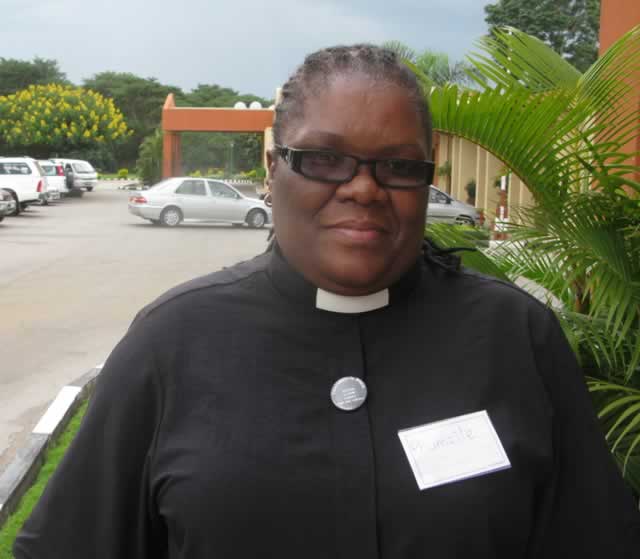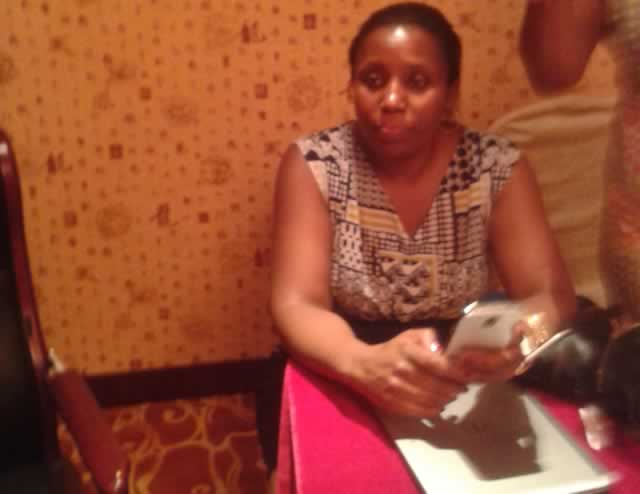A walk through the epidemic

for five years before us. Then I was still in secondary school and we talked of the deadly virus that would wipe people off the face of the earth. A friend, Juliana Muchemenyi, used to say, “Eat well, play hard and study hard because no one understands the virus”.
I am glad to say she is still alive although she has been greatly affected through losing close relatives.
As a country, Zimbabwe was concerned and from 1985 all blood products were screened for HIV and hepatitis B. With such gravity on its hands plans were mooted and a short-term plan to raise awareness in the medical field was rolled out from 1987 to 1988. The main message was prevention as it was known that the virus was mainly passed through unprotected sex and blood transfusion.
Mrs Shingi Matogo, still alive today, was diagnosed in 1986 after the birth of her child. She said the baby was ill and had been hospitalised several times. The doctors requested that an HIV test be run and both mother and baby tested HIV positive. Matogo said it was painful as the baby kept getting sick.
“My girl was sick on and off and that is a mother’s most painful heartache. Then medical personnel did not know much and gave no hope to people living with the virus. It’s by the grace of God that I am alive today. My baby lived up to 2000 and by then she had deteriorated,” said Matogo.
Matogo said her husband died in 1991 but they had long divorced before his death.
“My baby suffered so much that when she died I thanked God that she was now at rest. You know the pain of watching an ill child with medicine saying there is no cure, I went through hell,” said Matogo.
The country did not sleep on the job and a second Medium Term Plan was from 1988 to 1993. This focused on behaviour change, counselling for people living with HIV/Aids and monitoring the epidemic.
Today more than 1,2 million people are living with HIV with more than 400 000 having developed Aids as of end of 1998. Some may ask what is the difference between HIV/Aids. HIV is the infection and when it remains unchecked it gets to Aids. It is not possible to diagnose HIV through the eye but when it gets to Aids level, it is full blown and one is very ill.
Olive Mutabeni tested HIV positive in 1997 and is alive today. She worked as a nurse and with her imparting knowledge she saw the need to be tested.
“I was not ill but worked as a nurse. I had trained in in England in 1979 and by the time I came back I had knowledge of the virus. I worked for the Government and then the HIV virus had reached crisis level. I was testing and counselling people so I got tested myself. I did not think much about my HIV status. I only started ARVs in 2008 after my doctor recommended it as a safety measure. I was then working full-time as a volunteer in the community and my doctor was afraid that stress would curtail my health. So from then I have been on ARVs and have had no difficulty at all,” said the soft-spoken Mutabeni.
Many people who tested HIV positive in the late 90s did not make it. Medically we had little or constrained information and brand ARVs were available in the developed world. The cost was prohibitive. During this time, as a family we lost a brother Cloudious who was hospitalised with malaria for less than two weeks. The malaria got complicated as he tested HIV positive too. He died in 1998.
By 1995 nearly every family in Zimbabwe had been touched by the epidemic and the need to mobilise funds was adopted by the Government. Thus the Aids levy was mooted. The second Medium Term Plan was from 1994 to 1998. The epidemic had got to unprecedented crisis levels with people aged between 15 and 49 the most affected.
Statistics show that 25 percent of the population was infected which was very high as this translated to a quarter of the population. This led to the Government gazetting the Labour Relations HIV and Aids Regulations under Statutory Instrument 202 of 1998. The Government noted that an arm had to be in charge of handling the mammoth task and the National Aids Council was founded in 1999.
By 2000 NAC was functional with funding from the Aids Levy which saw every worker paying 3 percent tax towards alleviating the effects of the pandemic. In 2001 President Mugabe declared HIV a national disaster and it still is. The human toll of Aids was a tragic reality being experienced by families, communities and the nation at large. Aids reversed the gains made in social and economic development. Aids had become the major cause of illness and death among young and middle-aged adults depriving households of critical workforce mainly the breadwinners dying and leaving behind young children.
Tendai Westerhof, an HIV activist living positively for the last decade, now has an undetectable viral load. This means if she gets tested for HIV today, she would test negative.
“I have had an undetectable viral load for the past two years. I still take my ARVs religiously because I have to. ART is for life and this new lease of life can see me live 30 to 40 years since I started medication. One’s CD4 count going up is a sign that the ARVs are working well, but should never be used as a measure to stop ART,” Westerhof said.
Today Westerhof is a pillar of strength for many women who have been abandoned by their spouses. She is not bitter but has assured herself that life goes on.
Annah Sango is a young woman (25) who lives positively She has learnt to accept her condition and lives openly. She spoke in Washington in July 2012 on behalf of youths born HIV positive and what the future holds for them.
“I have gone beyond diagnosis. It’s now a way of living. Communities, especially families should be supportive in cases where one tests HIV positive,” said Sango.
Sango is a mother of a four-year-old boy and lives in Bulawayo.
My concern as a writer and living positively is with people still living in denial. We should have zero new HIV infections if we are to overcome the epidemic and keep those on ART alive.
A young woman from Mabvuku called with a sad story. She said she only learnt that she was HIV positive two months ago and stress is literally killing her.
“I got ill and tested HIV positive recently. My doctor ran tests and said my CD4 count was still okay to contain the virus. I am so stressed up and feel betrayed. My sister-in-law revealed that my husband was on medication for the past eight years. I had to get our seven-year old child tested, sadly she is positive. She was immediately commenced on ARVs and has no problems with the medication. She, however, keeps asking why she has to take tablets everyday and it’s hard to explain to a child this young. I pray someday she will be in a position to understand,” said the Mabvuku woman.
Children born to HIV positive mothers are exposed to the virus hence the need to get them tested. In the developed world where resources are not a constraint anyone can begin ART on testing HIV positive.
In Zimbabwe we use the WHO guideline of a 350 threshold as the entry to ART. The World Health Organisation is mooting upping the threshold to 500 as a measure to enlarge the network and save more lives. But for resource constrained countries like us, this could have challenges as the 350 threshold has resulted in 500 000 people waiting to be initiated on ART.
The HIV prevalence has gone down and today stands at 14,3 percent. However, new infections are still recorded and President Mugabe speaking at the 33rd independence celebrations in Harare said it was high time the nation got above the epidemic as everyone has got the message.
Feedback: [email protected]









Comments